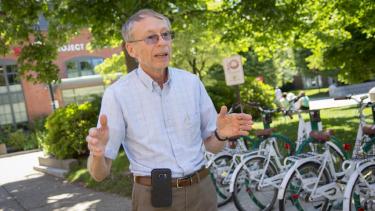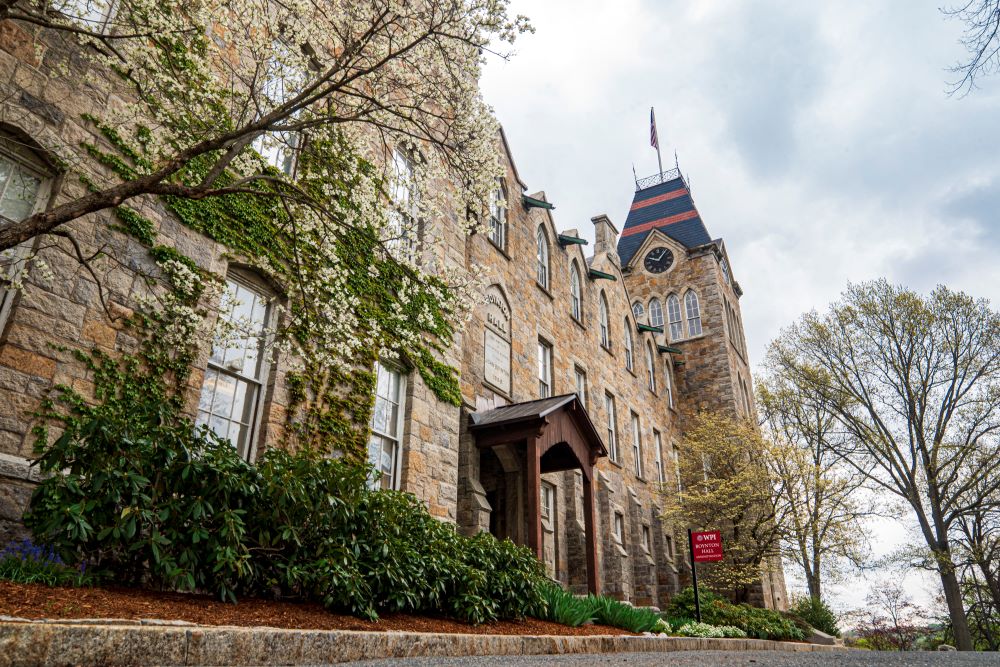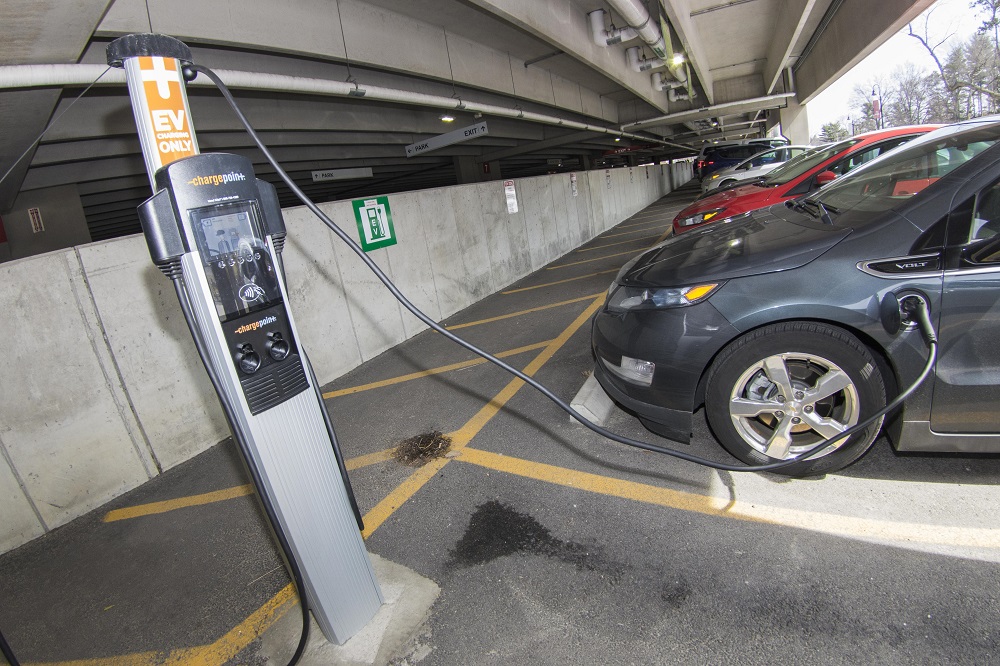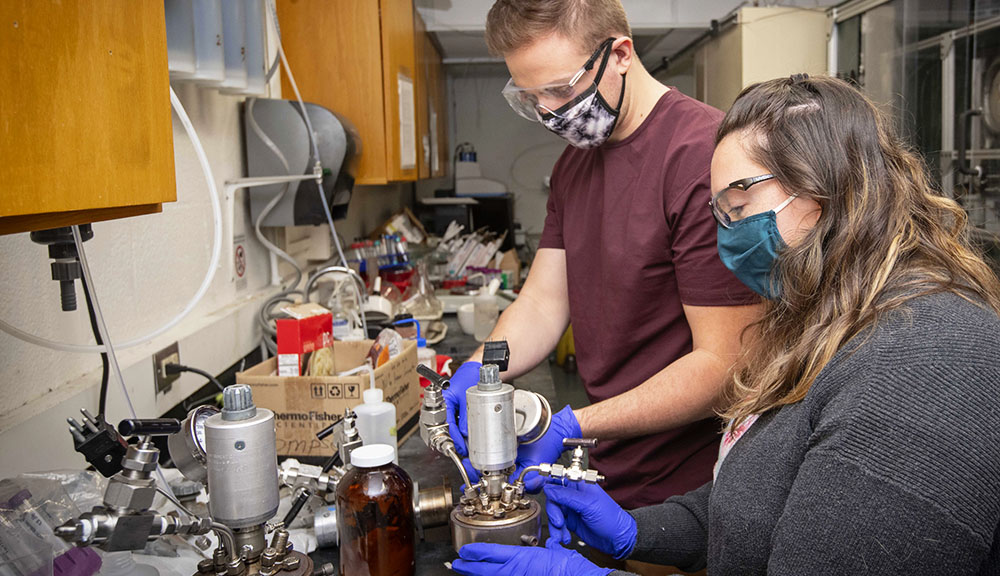WPI’s Plan for Sustainability calls for a major reduction in the university’s carbon footprint in the next few years, and the Office of Sustainability’s recently finalized Greenhouse Gas Reduction Plan is a map of how that will happen.
The plan calls for WPI to “achieve a 20 percent reduction in gross Scope 1 [natural gas for heat and fuel for campus vehicles and power equipment] and Scope 2 [electricity-related] Greenhouse Gas Emissions by FY25, relative to the benchmark year of FY14.”
John Orr, director of sustainability, says that while the plan is ambitious, WPI has already made significant inroads into reducing energy consumption and waste over the years, despite more building space and growth in numbers of students, faculty, and staff.
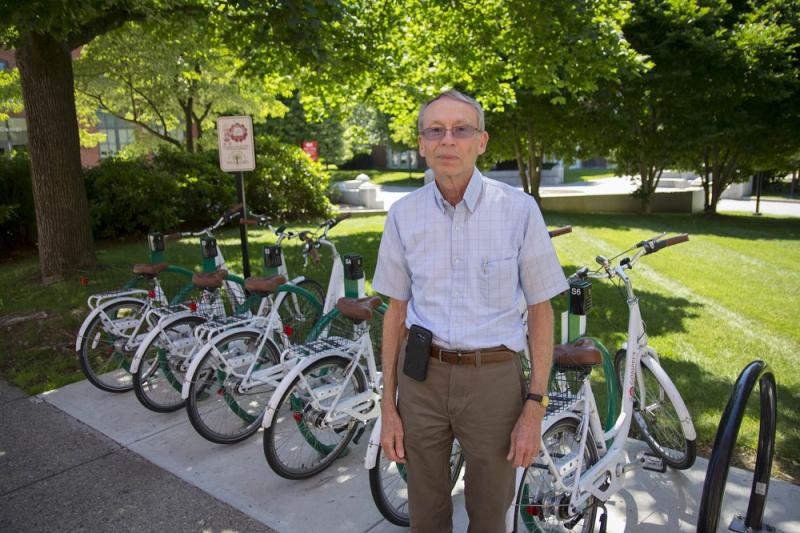
John Orr
“This plan has turned out better than I expected,” he says. “Over the past 15 years we had done a lot, such as converting from dirty fuel oil to much cleaner natural gas for our heat. However, our previous efforts had not been guided by a formal program or goal, and we needed that to move forward.
“But, I was concerned that further improvements would be either too expensive or unimpressive in size. Many schools set their benchmarks knowing they could reduce their greenhouse gas emissions by almost half just by the fuel oil-to-natural gas conversion,” he says, but that was already done and could not be counted toward a goal.
If WPI is already working toward reduction, why make the plan? "Well," says Orr, “those first years of reduction efforts were the easy part with obvious opportunities, but we knew that we could do more with a systematic approach and an ambitious but achievable goal. We also wanted our implementation to represent actual emissions reduction.”
Others might use offsets to reduce their numbers. For instance, they might pay an organization to plant trees to absorb some emissions elsewhere. “But how long will that tree really be there? We want to make sure our reductions are real,” he says.
“We have an urgent need to honor our educational and research mission,” says Orr. Therefore, he explains, buildings still have to be open for classes, labs, and meetings, and not be restricted just to save energy. And they have to be comfortably heated and cooled and well lighted for safety. Given all that goes on in this university, reducing by 20 percent—without including the large reduction achieved by switching to gas alone—seems more daunting. Luckily, he says, WPI is an ideal place to do that since the innovative technological discoveries going on here and elsewhere can be the key to improved and thoughtful technology. And technology—like the networked systems that control heating and cooling intelligently rather than on a fixed schedule and automatically adjust lab hood air flow—makes significant differences on a campus-wide scale.
“It's important to remember that sustainability is a combination of environmental, economic, and social improvements, and not just one of these." -Meghan Trahan ’17
With the Greenhouse Gas Reduction Plan, WPI pledges to continue strategies for reducing emissions including projects such as upgrading exterior lighting to LED fixtures, looking at energy efficiency in labs, analyzing campus water use, and supporting behaviors that conserve energy. It takes planning, effort, and funds to implement new systems. The Facilities Office has worked steadily to ensure a smooth transition for each new system implemented, says Orr.
And funding to start these programs is essential. Orr gives credit to Jeffrey Solomon, executive vice president and chief financial officer, for offering support for the program and for supplying initial funding to a Green Revolving Fund. Initiated by the student-run WPI Green Team, a fund like this typically receives an initial influx of cash that is spent on sustainability projects. As the projects begin to offer a return, those funds are returned to the fund to pay for future sustainability projects.
The students’ involvement is an important part of making the plan work effectively, but also of fulfilling what Orr believes is WPI’s fundamental duty of educating students to think for themselves so they can make informed decisions, not just about sustainability, but about every aspect of their lives.
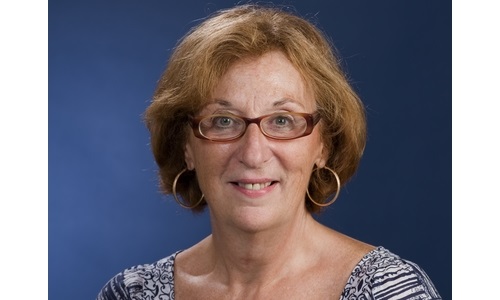
Liz Tomaszewski
Meghan Trahan ’17, a Green Team alumna, says student efforts have already made a big impact on sustainability. “WPI students do amazing work through our project centers, both on and off campus,” she says. “In fact, student IQPs are what have led to the creation of WPI's very first recycling program as well as our brand new bike share program. The goal of the Green Revolving Fund is the establishment of a self-sustaining fund for sustainability work at WPI, and in order to do this it needs great ideas and research related to the WPI campus.” Sustainability work also should be broad in scope to have the greatest impact. “It's important to remember that sustainability is a combination of environmental, economic, and social improvements, and not just one of these,” she says.
According to Trahan and Liz Tomaszewski, associate director of sustainability and facilities systems manager, the Office of Sustainability is establishing a committee that will involve students, faculty, and staff from diverse disciplines and backgrounds to guide the operation of the Green Revolving Fund. Student projects such as IQPs and MQPs will be considered for implementation, as will projects (that do not have to be student initiated) from other areas of campus. Even without a project proposal, students will have the opportunity to voice their opinions about what is important to them and why.
While there are three cornerstones of the Sustainability Plan—ecological stewardship, social justice, and economic security—the Greenhouse Gas Reduction Plan addresses mostly the first one. However, says Orr, WPI’s distinctive IQP program gives students direct experience in what is often a sustainability issue, addressing the remaining two. “Most of the overseas projects are sustainability-related, in communities where every resource is vital to them,” he says. Something like indoor plumbing or solutions to clean water can have tremendous impact on a community, and students are able to see the direct results of their work on sustainability issues. That real-world knowledge combined with the technical classroom know-how means WPI’s students are poised to bring great advances. Seeing how WPI is making such efforts on campus shows students why the Greenhouse Gas Reduction Plan is important, but also how they are gaining the know-how to do the same now and in their future lives.
On campus, Orr knows the 20 percent reduction goal is a tough one, especially on a growing and vibrant campus. “It’s about how we can be both comfortable and responsible,” he says. “It gets harder each year. But technology has advanced so much, and we can take advantage of that. We are counting on technology and hard work to get us there.”
- By Julia Quinn-Szcesuil
